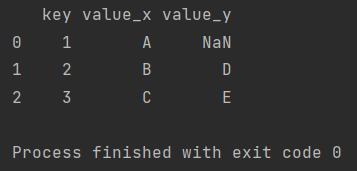I try to show you how to vlookup in Pandas.
The VLOOKUP function in Excel is a popular function that allows you to search for a value in a table and return the corresponding value from another column. The equivalent of a VLOOKUP in Pandas is the merge method, which allows you to join two DataFrames based on a common column.
How to Use the merge Method
The merge method takes three arguments:
- The first argument is the first DataFrame.
- The second argument is the second DataFrame.
- The third argument is the name of the column that the two DataFrames have in common.
The merge method returns a new DataFrame that contains the rows from both DataFrames that have matching values in the common column.
Example
The following code shows how to use the merge method to achieve the same results as the VLOOKUP function:
import pandas as pd
df1 = pd.DataFrame({'key': [1, 2, 3], 'value': ['A', 'B', 'C']})
df2 = pd.DataFrame({'key': [2, 3, 4], 'value': ['D', 'E', 'F']})
result = df1.merge(df2, on='key', how='left')
print(result)
In this example, the merge method will return a DataFrame with the following values:
key value_x value_y 0 1 A NaN 1 2 B D 2 3 C E

Advantages of using the merge method to perform a VLOOKUP
There are several advantages to using the merge method to perform a VLOOKUP:
- The merge method is more efficient than using a VLOOKUP formula, especially when working with large DataFrames.
- The merge method is more flexible than using a VLOOKUP formula. For example, you can use the merge method to perform a VLOOKUP on multiple columns or to return multiple values from the lookup table.
- The merge method is more robust than using a VLOOKUP formula. For example, the merge method will handle missing values in the lookup table gracefully.
The merge method in Pandas is the equivalent of the VLOOKUP function in Excel.
